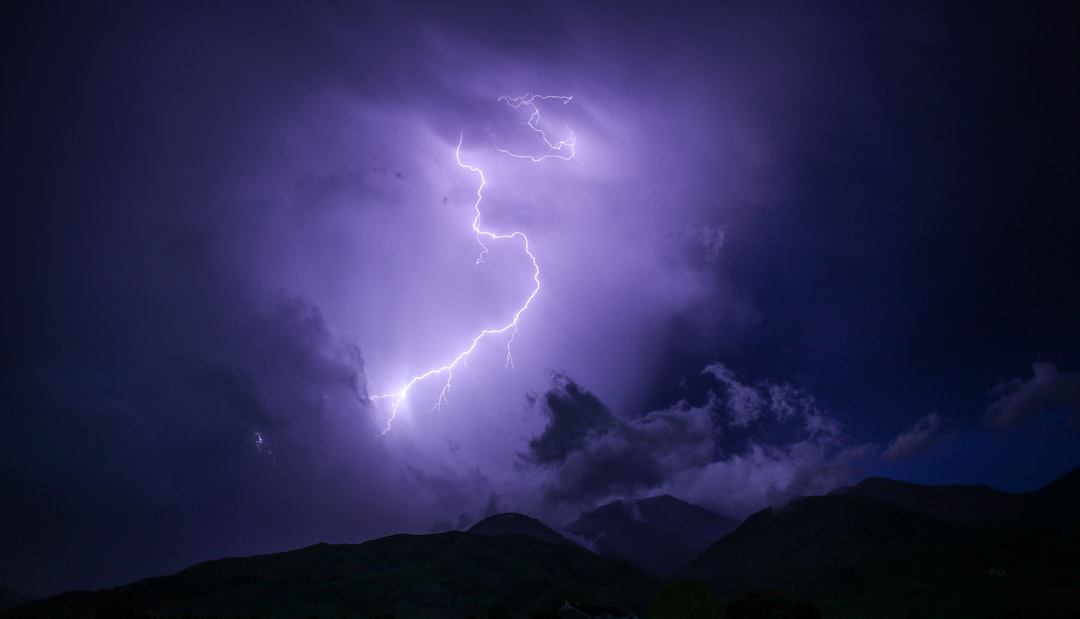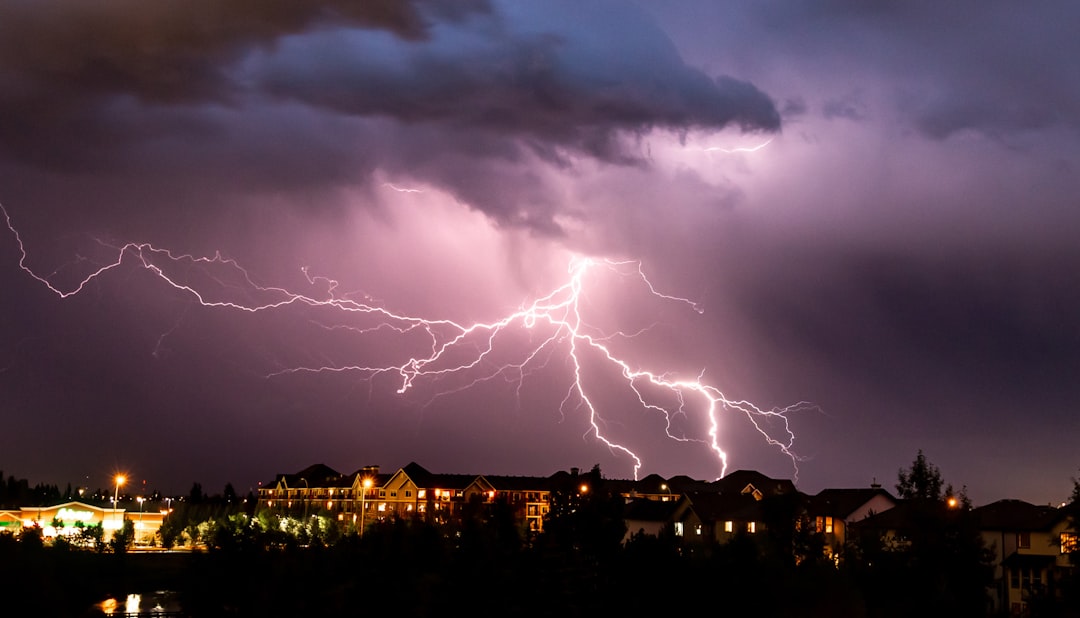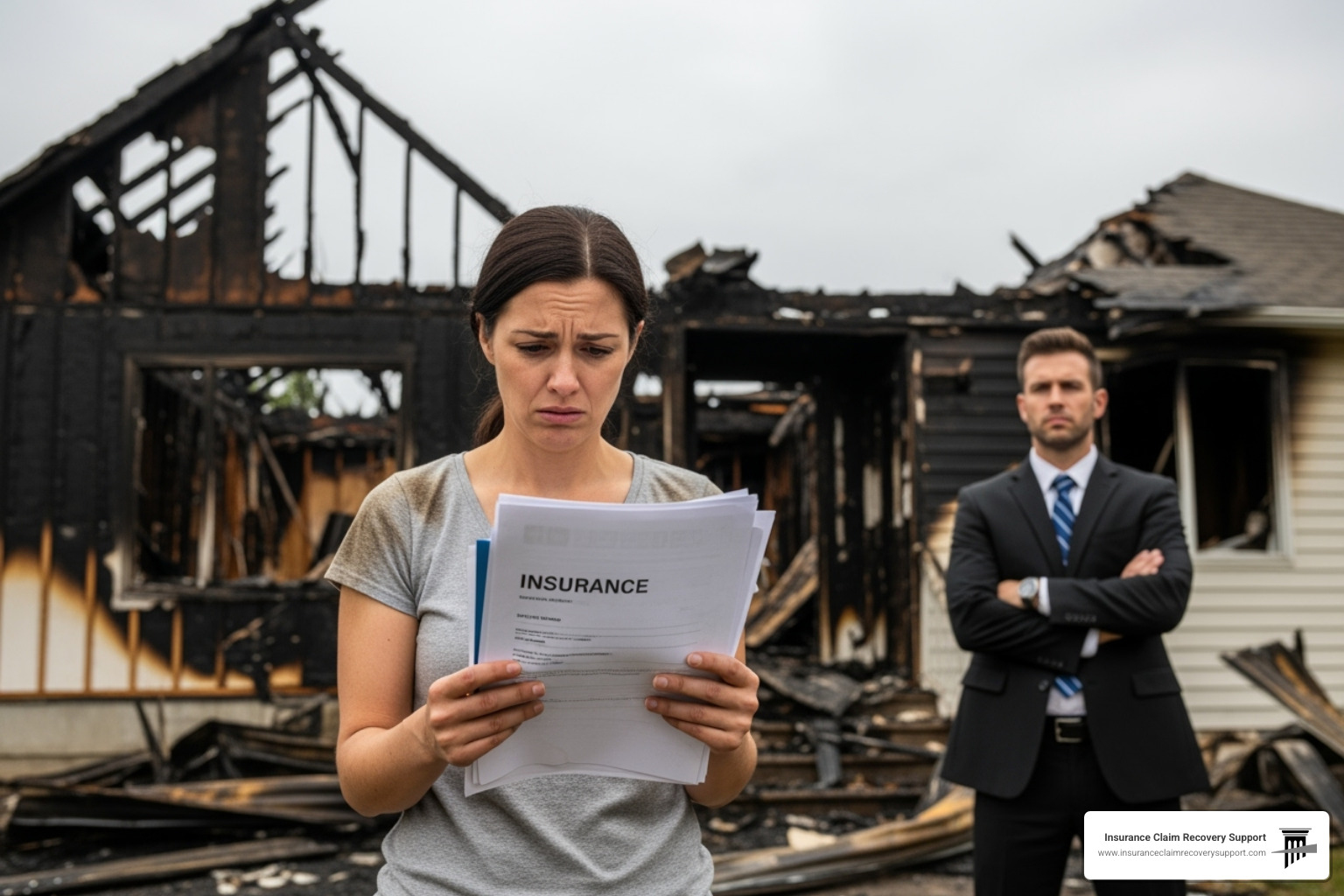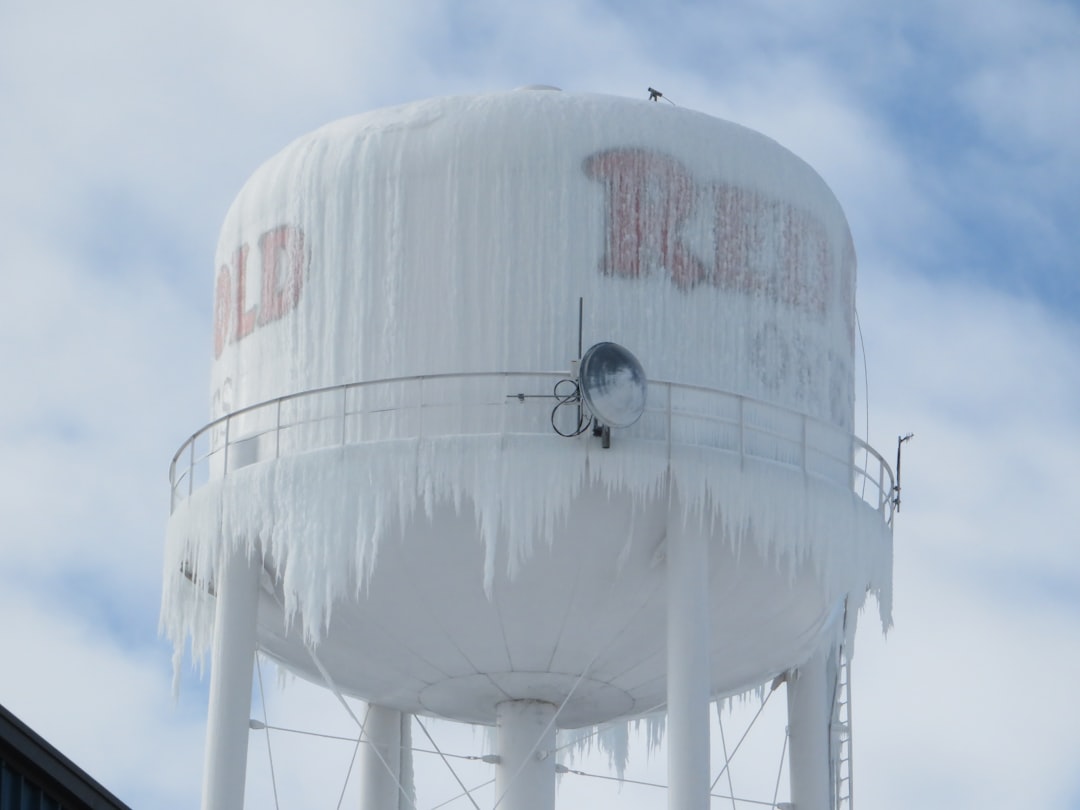Understanding Positive Lightning Strikes
Positive lightning strike is a powerful natural event that differs significantly from the more common negative lightning. While most people are familiar with lightning in general, many might not know that it can come in different forms with varying risks. Lightning can be categorized into three main types based on its interaction: cloud-to-ground, cloud-to-cloud, and cloud-to-air.
For a quick overview, here’s a comparison:
- Negative lightning: Makes up 90-95% of strikes, originates from lower storm clouds, shorter duration and distance.
- Positive lightning: Less than 5% of strikes, originates from upper storm clouds, stronger, lasts longer, and can strike miles away from the storm.
Positive lightning, while rare, is particularly dangerous due to its higher voltage and amperage. It can strike far from the storm, often without warning, making it a significant risk for outdoor activities even after the main storm seems to have passed.
I’m Scott Friedson, a licensed public adjuster and CEO of Insurance Claim Recovery Support LLC. With over 25 years in the field, I’ve helped numerous clients steer the complexities of insurance claims due to positive lightning strike damage. My expertise lies in ensuring policyholders receive fair and prompt settlements, avoiding unnecessary litigation and delays.

What is Positive Lightning?
Positive lightning is a rare but extremely powerful type of lightning. Unlike the more common negative lightning, which transfers negative charge from a cloud to the ground, positive lightning involves a transfer of positive charge. This happens because positive lightning originates in the upper parts of a thunderstorm, such as the cirrus anvil.
Positive Charge
In a thunderstorm, the upper regions, including the cirrus anvil, accumulate a high positive charge. When this charge builds up enough, it seeks a path to the negatively charged ground, creating a cloud-to-ground lightning strike.
Cloud-to-Ground
Positive lightning follows the same basic principles as negative lightning, but with a key difference: the stepped leader descending from the cloud carries a positive charge, while the ground streamers carry a negative charge. This reverse in charge makes positive lightning much more powerful and dangerous.
Upper Thunderstorm
The upper parts of a thunderstorm are where positive lightning originates. Because these regions are higher up, the lightning has to travel a greater distance through the air to reach the ground. This makes the electric field much stronger, resulting in a strike that can be up to ten times more powerful than a negative strike.
Cirrus Anvil
The cirrus anvil is the flat, spreading top of a thunderstorm cloud. Positive lightning often originates here, making it capable of striking much farther from the storm than negative lightning. This phenomenon is sometimes called a “bolt from the blue” because it can strike up to 25 miles away from the main storm, often without warning.
Positive lightning is not only more powerful but also more unpredictable. It can strike far from the storm, making it a significant risk for outdoor activities even after the main storm seems to have passed.
Differences Between Positive and Negative Lightning
Lightning is a powerful natural phenomenon, but not all lightning is the same. There are two primary types: positive lightning and negative lightning. Understanding the differences between them can help you better appreciate the risks and effects associated with each.
Charge Transfer
Negative lightning is the most common type, making up about 90-95% of all strikes. It involves the transfer of negative charge from the cloud to the ground. Positive lightning, on the other hand, involves a transfer of positive charge from the upper parts of the thunderstorm to the ground. This difference in charge transfer makes positive lightning much more powerful.
Flash Duration
The duration of a lightning flash also varies between the two types. Positive lightning typically has a longer flash duration compared to negative lightning. This extended duration contributes to its increased destructiveness.
Amperes and Volts
When it comes to strength, positive lightning is significantly more powerful. A typical positive lightning strike can carry up to 300,000 amperes and one billion volts. In contrast, a negative lightning strike usually carries around 30,000 amperes and 300 million volts. This means that positive lightning can be up to ten times more powerful in terms of amperes and volts.
Strike Distance
Negative lightning generally strikes directly under the thunderstorm, where the ground is positively charged. This makes it more predictable as it usually occurs within the storm’s rain shaft. Positive lightning, however, can strike much farther from the storm, often up to 25 miles away. This is why it’s sometimes referred to as a “bolt from the blue.” These long-distance strikes make positive lightning particularly dangerous, as they can occur even when the main storm seems to have passed.
Understanding these differences can help you better prepare for and mitigate the risks associated with both types of lightning.
Next, we’ll dig into the specific dangers of positive lightning strikes and why they are considered more lethal and damaging compared to their negative counterparts.
The Dangers of Positive Lightning Strikes
Positive lightning strikes are especially dangerous for several reasons. Let’s dive into why they are so lethal and unpredictable.
Forest Fires
One of the most severe consequences of a positive lightning strike is its ability to start forest fires. Positive lightning is hotter and carries a greater electrical charge compared to negative lightning. This intense heat can easily ignite dry vegetation, leading to catastrophic wildfires. In fact, positive lightning is responsible for a significant percentage of forest fires each year.
Power Line Damage
Positive lightning can also cause extensive damage to power lines. The high voltage and longer flash duration of these strikes can overload electrical systems, resulting in widespread power outages. This type of lightning is known to cause more severe damage to infrastructure compared to negative lightning, making it a major concern for utility companies.
Lethal
Positive lightning is more deadly than negative lightning. It carries a charge that can be up to ten times greater, making it extremely dangerous for anyone caught in its path. According to research, most lightning strike victims are hit by positive lightning. The higher fatality rate is due to its stronger current and longer strike duration.
Unpredictable
One of the most frightening aspects of positive lightning is its unpredictability. These strikes can occur more than 25 miles away from the main storm, often referred to as a “bolt from the blue.” This means they can strike without warning, even when the sky above seems clear. This unpredictability makes it hard to take necessary precautions, increasing the risk of injury or death.
Understanding these dangers underscores the importance of taking lightning safety seriously. Next, we will explore the science behind positive lightning strikes to better understand how they occur and why they are so powerful.
The Science Behind Positive Lightning Strikes
Positive lightning strikes are fascinating and complex phenomena. Let’s break down the science behind them.
Electric Field
Positive lightning originates in the upper parts of a thunderstorm, where the electric field is incredibly strong. The electric field is a region around a charged particle where a force would be exerted on other charges. In the case of positive lightning, the electric field is strong enough to overcome the insulating properties of the air, creating a powerful electrical discharge.
Stepped Leader
A stepped leader is the initial path of ionized air that moves downward from the cloud. In positive lightning, this path carries a positive charge. The stepped leader moves in discrete steps, creating a zigzag pattern. Each step lasts for a few millionths of a second and can travel tens of meters.
Ground Streamers
As the stepped leader approaches the ground, it induces ground streamers to rise from the earth. These streamers are channels of ionized air that carry a negative charge. When a ground streamer connects with the stepped leader, it completes the circuit, allowing the massive electrical discharge to occur.
Sprites and Elves
Positive lightning is also linked to fascinating upper-atmospheric phenomena known as sprites and elves.
- Sprites are large-scale electrical discharges that occur high above thunderstorms, often triggered by the electrical activity of positive lightning. They appear as red, jellyfish-like flashes and can extend up to 45 miles in altitude.
- Elves are even higher-altitude flashes, occurring up to 250 miles above the storm. They appear as expanding halos and are also associated with positive lightning.
Bipolar Lightning
Another intriguing aspect is bipolar lightning, which changes its polarity during a strike. This means that a single bolt can switch from positive to negative or vice versa. Bipolar lightning is rare and not well understood, but it highlights the complexity of electrical activity in thunderstorms.
Understanding these scientific concepts helps us grasp why positive lightning is so powerful and dangerous. Next, we’ll look at the impact of positive lightning strikes on property and how you can protect yourself and your assets.
Positive Lightning Strikes and Property Damage
Positive lightning strikes are not just a scientific curiosity; they can cause significant property damage. Here’s how:
Forest Fires
Positive lightning is a major cause of forest fires. Because these strikes carry a greater charge and last longer, they can easily ignite dry vegetation. According to the National Fire Protection Association, thousands of fires each year are started by lightning, with a significant percentage attributed to positive strikes.
Power Line Damage
Positive lightning also wreaks havoc on power lines. The higher voltage and amperage can cause severe damage to electrical infrastructure. This can lead to widespread power outages and costly repairs. In fact, positive lightning is often responsible for more extensive damage compared to its negative counterpart.
Insurance Claim Recovery Support
Navigating the aftermath of a lightning strike can be daunting. This is where Insurance Claim Recovery Support comes in. As public insurance adjusters, they specialize in helping property owners in Texas and beyond manage their insurance claims. From documenting the damage to negotiating with insurance companies, they ensure you get the maximum settlement possible.
Public Insurance Adjuster
Hiring a public insurance adjuster can make a significant difference in your claim’s outcome. These experts work for you, not the insurance company. They understand the complexities of lightning damage and know how to present a compelling case to get you the compensation you deserve.
Texas
Texas sees a high number of lightning strikes each year, making it a hotspot for lightning-related property damage. In 2018 alone, Texas recorded 2,483,805 negative cloud-to-ground flashes, the highest in the nation. With such a high incidence rate, having a trusted public insurance adjuster like Insurance Claim Recovery Support is crucial for Texas residents.
Understanding the dangers of positive lightning and knowing how to handle the aftermath can save you time, money, and stress. In the next section, we’ll answer some frequently asked questions about positive lightning strikes.
Frequently Asked Questions about Positive Lightning Strikes
What are the three types of lightning strikes?
Lightning comes in three main types:
- Cloud-to-cloud (CC): This is when lightning travels between different clouds. It’s the most common type and usually stays high in the sky.
- Cloud-to-ground (CG): This is the dangerous kind that strikes the earth. It can be either positive or negative, with positive lightning being particularly powerful and dangerous.
- Cloud-to-air (CA): This type of lightning discharges from a cloud into the open air. It’s less common but still spectacular to see.
What are the positive effects of lightning strikes?
While lightning can be dangerous, it also has some positive effects, especially for the environment:
- Nitrogen Cycle: Lightning helps convert nitrogen in the atmosphere into nitrates, which fall to the ground with rain. These nitrates are essential nutrients for plant growth.
- Plant Growth: The nitrates produced by lightning enrich the soil, promoting healthier plants and crops. This natural fertilization process is vital for ecosystems around the world.
Can negative lightning strikes start fires?
Yes, negative lightning strikes can start fires, though they are less likely to do so compared to positive strikes. Negative lightning has a shorter flash duration and lower peak charge, but it can still ignite flammable materials under the right conditions.
Understanding these facets of lightning helps you stay informed and prepared. Whether it’s knowing the types of lightning or the benefits they bring, you’re now better equipped to handle nature’s electric show.
Conclusion
When lightning strikes, the aftermath can be daunting. Whether it’s positive lightning or negative, the damage can be severe and costly. That’s where we, at Insurance Claim Recovery Support, come in.
As public insurance adjusters, our mission is to advocate for policyholders. We steer the complex insurance landscape to ensure you get the maximum settlement possible. Our expertise in policy interpretation and claim negotiation removes the burden from your shoulders, making the claims process smooth and stress-free.
In Texas, a state prone to severe storms and lightning damage, our presence is crucial. We have extensive experience dealing with local insurance companies and understand the specific challenges that Texans face. Whether it’s damage from forest fires or power line strikes caused by positive lightning, we are here to help.
Our team is skilled in handling not just lightning damage claims but also related storm damage. We ensure that no matter how complex your situation, you are not left out-of-pocket due to inadequate insurance assessments or settlements.
For more details on how we can assist you, please visit our service page.
When lightning strikes, you’re not alone. We’re here to light the way to recovery.







